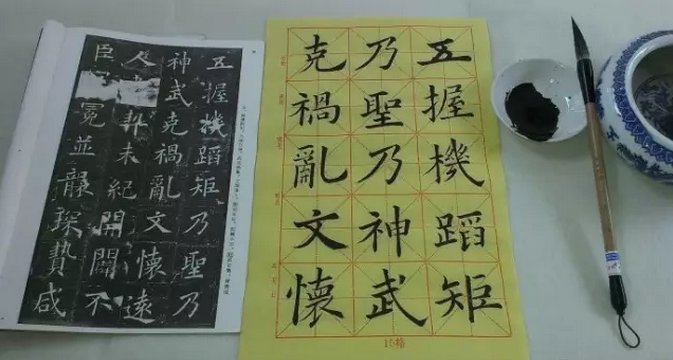Obviously, this question is for those who really want to practice calligraphy well and who really care about their writing situation. Because for people who don’t really want to practice calligraphy well, they don’t have time. This is a good reason and excuse not to practice calligraphy.
It is the wish of many people to practice calligraphy well. Many people cannot write Chinese characters well, and they still worry about it when they grow up. Some have always wanted to find opportunities to learn from teachers, while others have given up and pinned their hopes on their children. Both adults and children face the problem of insufficient or almost no time to practice.

Needless to say, adults are busy making a living and running around so much that they rarely have leisure time. Children are often burdened by something called "homework". Just completing homework every day requires a considerable amount of spare time, plus various training courses such as dance, piano, art, etc. If the grades are not good enough, there are various cram schools.
How much time do you have left to practice calligraphy? Some children participate in calligraphy classes and don’t even have time to go to class!
So, is it possible to write better and better without having time to practice calligraphy?
The answer is: yes.
So what to do?
To answer this question, you must first know: How to practice when you have time to practice, so that your calligraphy will get better and better. Or in other words, you must first know how words become better and better.
There are two most important steps in practicing calligraphy. The first step is to copy, and the second step is to apply.
Copying, simply put, is imitation. Generally, you need to find famous calligraphers or other reliable copybooks, and compare them word by word. The more similar it is to writing, the better. In the process of facing each other, you can feel the shape of strokes, become familiar with the structure of glyphs, and understand how to reasonably deal with the relationship between each stroke and each part in a character. In this process, we accumulate experience and explore the rules. Over time, the purpose of drawing inferences from one instance and drawing parallels from another is achieved.
Application, that is, applying what you learn during the copying process in your daily writing. To put it simply, write how you practice during practice. this point is very important. Without this process, writing well will inevitably be an empty talk and an impossible wish.
The time spent practicing calligraphy is often spent on the first step of copying. So if you don’t have time to copy and don’t learn anything new, what can you use in your daily writing? Isn’t this water without a source and a tree without roots?
No. Just because you don’t have time to copy doesn’t mean you have to give up on this step and the important role it plays.
So what exactly do you do?
First, make sure you are holding your pen correctly. This is the most basic and very important premise. If the posture of holding the pen is wrong, it will greatly affect the writing effect.
Secondly, you must learn to copy quickly. Originally, the process of copying should be slow. Only by slowing down can we truly and meticulously feel the various details of the strokes and structure. While copying, we can improve at the same time. If we keep repeating this process, the more we write, the more similar it will be. Now that we don’t have time, we need to learn to copy quickly. What does that mean? That is, through a short observation, quickly write down the biggest and most impressive advantages of the characters to be learned on the copybook, and then use them immediately.
This is quick copying. As long as the handwriting you copy quickly is better than the previous one, it is effective and progressive, and your writing will get better and better.
Thirdly, it is necessary to use it timely and repeatedly. What if you find a beautiful word and write down its writing in your mind through quick observation, but you don’t have paper and pen? Or what should I do if I have paper and pen but it’s inconvenient to write? What if you forget it soon?
We say that we should use it in time to avoid forgetting. At this time, you cannot limit and rely on paper and pen to practice. In the air, on clothes, on thighs, in hands, in pockets, you can gesture and practice everywhere! And it must be repeated practice so as to deepen the memory. So the “application” mentioned earlier means practice first.
Of course, application also includes daily writing, which is also very important. That is to say, after memorizing the new way of writing a certain word, I will immediately change my usual writing to the new way of writing, and write like this all the time or even forever. Only in this way can what we learn truly become our own abilities.
Therefore, if you don’t have time to copy slowly, if you can pay attention to everything, observe carefully, and use every opportunity to practice and apply it in a timely and continuous manner, your handwriting will become more and more beautiful.
It should be noted that the quick copying method is not a shortcut to practicing writing. This is just a stopgap measure when there is no time to copy. The so-called lack of time is only a relative term, it is a phase. Once you have time, you still have to calm down, write the post honestly, and build solid basic skills bit by bit.








